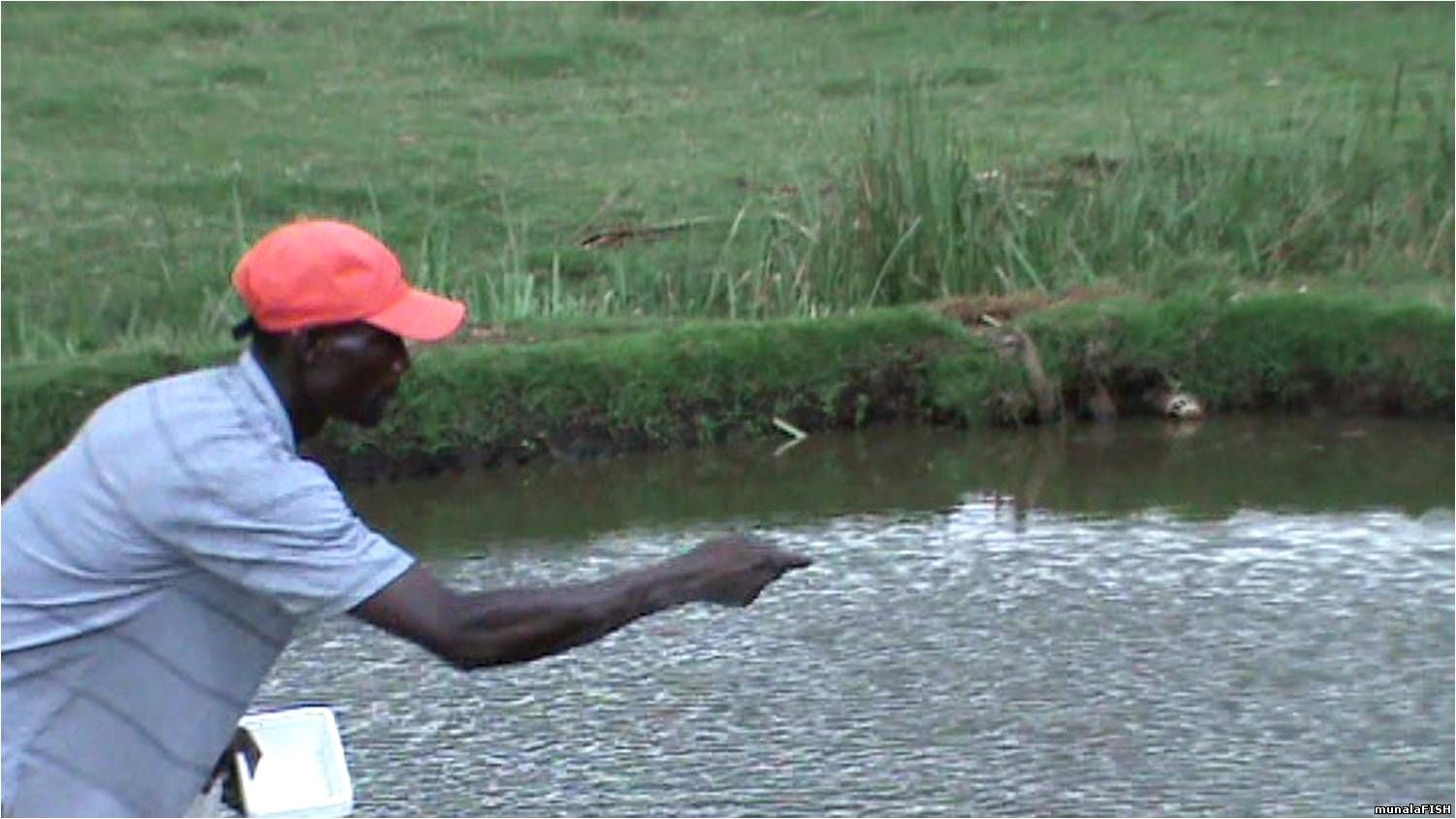HOW TO FEED YOUR FISH
Here are a few points to note when feeding your fish:
- Fish are cold blooded animals. During warm and sunny weather they are very active and respond to feeding very fast. But when the weather is cold and gloomy, the response is slow.
- Fish don’t feed well when they are under stress. The stress may be caused by predator disturbance, sampling (by running a net through the pond), poor water quality etc. High water temperatures will also stress the fish because this reduces the amount of dissolved oxygen in the water.


How to Feed your fish
Tilapia are usually fed by broadcasting the feeds on the surface of the pond. They can either be fed from specific feeding areas or at various spots around the pond. The advantage of selecting specific feeding spots is that the fish soon identify such points with food and will respond very fast. Generally, one feeding point will work well for small ponds; but for bigger ones, several spots may be identified.
When to feed
As a rule of thumb, fish grown under semi-intensive culture should be fed at least twice a day. The best time to feed is in the mid-morning (between 9:00am - 10:00am) and mid-afternoon (4:00pm - 5:00pm). Fingerlings should be fed more frequently, but in smaller rations.
It is important to observe the following conditions before feeding the fish:
How much to feed
- When the morning is very gloomy and there is no sun, delay the feeding
- If the fish do not respond or come to the surface after 'throwing' in some feeds - stop feeding and check if there is a problem
- Don't feed if the water has been disturbed in any way e.g. after using a net to harvest or sample the fish
- If the fish or fingerlings have just been introduced into the pond i.e. after stocking, or if some form of treatment has been carried out, do not feed on that day
Fish can either be fed on the basis of their body weight or on demand (ad libitum).
Feeding based on body weight
The fish are given feed equivalent to 3% - 5% of their body weight daily.
To use this method of feeding, you need to know the average size of your fish. This can be obtained through sampling at regular intervals e.g. after every two weeks. To do this, run a net though the pond and get a few fish (possibly 10), quickly get their total weight and return them into the water. If you divide this total by the number of fish (10 in this case) you will get an estimate of the weight of each fish. For example, if the average weight of each fish is 50 grams and your pond has 1000 fish, then the total weight of all the fish is 50kg (50,000 grams). The total daily ration for these fish will be between 1.5kg - 2.5kg
Feeding ad libitum
Fish are fed based on their appetite. The person feeding needs to feed the fish for as long as they are actively feeding. Once the response has slowed down considerably and most of the feed remains floating, feeding can be stopped. THIS MUST BE DONE WITHIN A MAXIMUM OF 30 MINUTES - going beyond this time limit will lead to wastage since there is no time you will have 'zero response'.